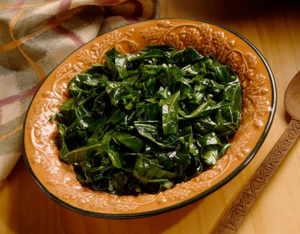Is bitter better? What makes bitter foods more healthful for you?
By Susan Burke March
As Dr. Andrew Weil, the medical doctor and integrative physician writes in the HuffingtonPost.com, “America is still probably the most sugar-philic and bitter phobic culture the world has ever known.”
The Standard American Diet (SAD Diet) consists mostly of bland foods, red and processed meats, refined and processed white carbs, with a minimum of fresh fruits and vegetables, legumes, or whole grains. Of the three most truly bitter foods consumed by most North Americans regularly — coffee, chocolate, and beer — only beer is not heavily sweetened. But, some of nature’s most nutritionally potent foods are bitter — and they’re also better for you!

Dr. Andrew Weil
Foods are often naturally bitter, both to protect the plant from predators and humans from toxins. For example, quinoa (prepared like a grain, but actually a seed) has a coating called saponin, whose bitter flavor discourages birds from eating it. Most toxic plants taste extremely bitter to humans and research shows that bitterness receptors are different for different people and the bitterness tolerance may be evolutionary. Popular Science notes that researchers speculate that at low levels some toxins may be preventative — for example, in some parts of the world where malaria is a problem, ingesting low levels of cyanide, as in certain plants, fights malarial parasites.
Dr. Weil, writing for the Huffington Post, explains that sweet foods are virtually never toxic. At the same time, bitter foods are not always toxic, and some are excitingly nutrient dense — sometimes, as in greens — much more than their corresponding sweet variety. For example, lettuces — sweet and bland iceberg lettuce doesn’t offer much in the way of vitamins and minerals, but bitter and spicy greens stimulate the liver to produce bile, which enhances digestion and promotes absorption of fat-soluble vitamins A, D, E, and K.

Collard greens
Bitter and spicy greens include collards, chard, escarole, beet greens, purslane, kale, turnip greens, mustard greens, dandelion greens, and arugula — all are potent sources of minerals like iron, magnesium, potassium, and calcium, as well as carotenoids — the colorful pigments that the body converts to vitamin A.
Other nutritious bitter vegetables are from the cruciferous family, including cauliflower, cabbage, cress, bok choy, Brussels sprouts and more.
Everyone should aim for at least one to two servings daily: A serving is 1-cup raw greens, or ½ cup cooked.
Making Bitter Better
When you’re ready to cook or prepare for a salad, first, wash greens thoroughly in clean water. The easiest way is to fill your sink with cool water, give the greens a good bath, using your hands to get in there and separate the leaves, rinse, shake dry and spin dry or lay them on a clean towel and roll up and refrigerate until ready to use.
Pairing bitter greens with a little fat and vitamin C-rich foods is a great way to enhance the flavors and nutritional availability.
Balance the flavor: Sweet, sour, and salt can balance out bitter flavors. I like to cook my greens with olive oil, a splash of balsamic vinegar, and a grind of sea salt and pepper each.

Chocolate
Balance the bitterness with some acid and sweet: try balsamic vinegar or honey; I also like wine or apple cider vinegar. Soy and Worcestershire add salt and complexity.
When raw in salads: Add some citrus juice as part of your dressing: whisk together whole grain and Dijon mustard with freshly squeezed citrus juice (can be lemon, orange, or lime) and extra-virgin olive oil, salt and pepper.
Succulent flavors: Cook your greens with sliced onion, garlic, a little olive oil and splash of balsamic vinegar — red pepper flakes and grated fresh ginger are my favorites.
Blanch greens before: to remove some bitterness blanch the greens just briefly (about 2 minutes) in boiling, salted water: not too long or they’ll be mushy and lose the brilliant green color — transfer to an ice-water bath or rinse quickly under cold water, wring dry, then chop and use in your recipe.
Roast your veggies: I once had a client who hadn’t eaten any vegetables save lettuce and tomato in 40 years — since he was 13 years old. He said he “hated vegetables,” especially anything in the cruciferous family. Turns out, he’d only had overcooked, soggy and tasteless (or more likely, bad-tasting) stuff. I suggested tossing Brussels sprouts with some olive oil, salt and pepper and roasting. He returned and said, “Why has no one ever told me about this? They’re so sweet!” Try it; I know you’ll like it.
Read more of Dr. Weil’s thoughts on bitter foods in the HuffingtonPost.com.




















